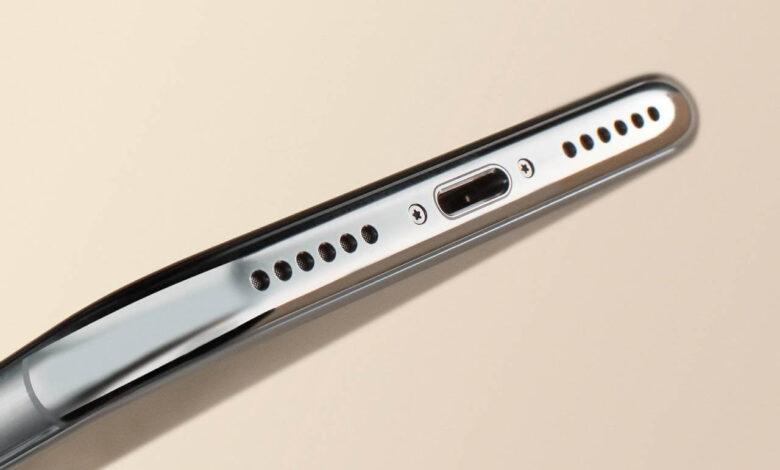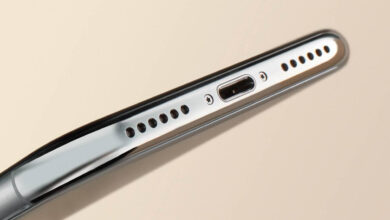How to Connect Phone with Speaker: Quick and Easy Pairing Guide

Connecting your phone to a speaker can transform your music experience, allowing you to enjoy your favorite tunes with better sound quality wherever you are. Whether you’re setting the mood for a party, creating a personal oasis at home, or just enhancing your morning routine, pairing your device with a speaker can be a significant upgrade over your phone’s built-in speakers.
The process is straightforward and generally similar across most devices. It typically involves turning on Bluetooth on both your phone and speaker, putting the speaker in pairing mode, and selecting the speaker from your phone’s list of available Bluetooth devices. Some speakers may require a PIN or passkey, but many will connect automatically once they’ve been initially paired.
With just these simple steps, you can start streaming podcasts during your kitchen prep, blast a power playlist during workouts, or set the ambiance for dinner with background music. The ease of connecting your phone to a speaker means you can enjoy a richer, more robust sound experience at your convenience.
Understanding Bluetooth Connectivity
Before you start pairing your phone with a speaker, it’s important to get to know Bluetooth technology and the different versions that could affect your connection quality.
What Is Bluetooth?
Bluetooth is a wireless technology that allows devices to communicate with each other over short distances. Using radio waves, it creates a secure, low-power connection that is ideal for connecting your phone to a speaker, eliminating the need for tangled wires or specific docking stations.
Bluetooth Versions
Different Bluetooth versions offer varying ranges, speeds, and other features. Here’s a quick look at some common versions you might encounter:
- Bluetooth v2.1: Offers better security than previous versions and a pairing process called Secure Simple Pairing (SSP).
- Bluetooth v3.0 + HS: Stands for high speed, providing faster data transfer rates and improved power control to save on battery life.
- Bluetooth v4.0: Introduces Bluetooth Low Energy (BLE) for devices that need to conserve power, like fitness trackers.
- Bluetooth v5.0: Increases range and bandwidth, making it a great choice for audio streaming to your Bluetooth speaker.
Note: Always check your devices for compatibility. Newer versions are typically backward compatible with older hardware, but the range and features available will be limited to the oldest version in use.
Preparing Your Devices
Before pairing your phone with a speaker, ensure Bluetooth is enabled on your device and that the speaker is compatible and in pairing mode.
Enabling Bluetooth on Your Phone
First, turn on Bluetooth on your phone. Depending on your phone’s operating system, sweep down from the top of the screen to access the quick settings and tap on the Bluetooth icon to activate it. Alternatively, go to Settings > Bluetooth and toggle it on.
Checking Speaker Compatibility
Next, verify that your speaker is compatible with your phone. Most modern speakers use Bluetooth, so check that your speaker supports Bluetooth connectivity. If it’s a Wi-Fi-enabled speaker, ensure your phone also supports this connection method. Turn the speaker on, typically by pressing the power button, and activate pairing mode as per the speaker’s instructions. Usually, a light indicates that the speaker is in pairing mode.
Pairing the Devices
Connecting your phone with a Bluetooth speaker allows you to enjoy music and audio from your device with amplified sound.
Initiating Pairing Mode
First, ensure that your Bluetooth speaker is in pairing mode. This is typically done by pressing the pairing button on the speaker until you see a flashing light or hear a sound indicating it’s ready to pair. Check your speaker’s manual if you’re unsure, as the pairing button may vary among different brands and models.
Connecting via Phone
Next, on your phone, navigate to Settings and then tap on Bluetooth. Turn on the Bluetooth if it is not already activated. Your phone will begin searching for devices. From the list of available devices, select your Bluetooth speaker’s name. If prompted, enter the PIN or passkey—often a simple code like 0000 or 1234, or unique to your specific speaker.
Connecting via NFC
NFC, or Near-Field Communication, enables quick and easy pairing between your phone and speaker with just a touch.
Understanding NFC
NFC is a wireless technology that allows two devices to communicate when they are close together, usually no more than a few centimeters apart. Your phone likely has an NFC chip that facilitates these types of connections, making it easier to pair with other NFC-compatible devices, like some Bluetooth speakers.
NFC Pairing Process
To pair your NFC-enabled phone with an NFC-enabled speaker, follow these steps:
- Unlock your phone: Make sure your phone is active and not in standby mode.
- Enable NFC: Go to your phone’s settings and turn on the NFC feature.
- Initiate pairing:
- Find the NFC logo on your speaker, which indicates the NFC touchpoint.
- Touch the back of your phone to the NFC touchpoint on the speaker.
- Confirmation: Your devices should connect almost instantly. You may hear an audible cue or see a notification confirming the pairing success.
If the devices do not pair on the first attempt, ensure both NFC functions are enabled and repeat the steps.
Using Audio Cables
When you want to connect your phone to a speaker using audio cables, it’s important to get the right cable and make the connection correctly to ensure the best sound quality.
Types of Audio Cables
There are essentially two types of audio cables you might use to connect your phone to a speaker:
- 3.5mm TRS Cable (Auxiliary Cable): This is the most common audio cable. It has a small, round connector that fits most phone headphone jacks and portable speakers.
- RCA Cables: Typically used to connect to a home stereo system. They have red and white connectors that you’ll plug into corresponding jacks on the back of the stereo.
Cable Connection Process
-
Identify the Right Ports:
- Ensure your speaker has a 3.5mm input jack for an aux cable or RCA inputs for RCA cables.
-
Make the Connection:
- For aux cables, simply plug one end into your phone’s headphone jack and the other into the speaker’s aux input.
- For RCA cables, you may need an adapter to convert the single 3.5mm plug to dual RCA connectors. Attach the adapter to your phone, then plug the red and white ends into the corresponding RCA inputs on your speaker.
By following these steps, you should be able to enjoy your music through the speaker with a stable, wired connection.
Optimizing Sound Quality
Once you’ve connected your phone to your speaker, adjusting the audio settings and speaker placement can significantly enhance your listening experience.
Adjusting Audio Settings
- Equalizer (EQ) Settings: Head to your audio app’s settings and look for the equalizer. Here, you can select a preset that suits your music genre or create a custom EQ setting to match your preferences.
- Volume Levels: Ensure your phone’s volume is set to an optimal level. Too high can cause distortion, and too low may not utilize the speaker’s potential.
Speaker Placement
- Room Acoustics: Place your speaker in an open space where it’s not obstructed by objects that could absorb or reflect sound.
- Speaker Angles: Angle your speakers toward your usual listening area for the best direct sound.
Remember, each adjustment can have a significant impact on sound clarity and quality.
Maintenance and Troubleshooting
When your phone and speaker aren’t cooperating, it’s often due to power issues or connection hiccups. Let’s walk through some common troubleshooting steps you can take.
Battery and Charging
Ensure both devices are adequately charged. For your phone, check the battery indicator and plug it in if necessary. As for your speaker:
- Check the battery level if it has an indicator.
- Charge your speaker thoroughly before use, following the manufacturer’s guidelines.
A speaker with a drained battery can lead to connection problems or no sound output.
Common Connection Problems
Bluetooth Troubles: If your devices won’t pair:
- Turn Bluetooth off and on on your phone through the settings menu.
- Restart both devices to refresh their connection settings.
- Forget the speaker in your phone’s Bluetooth settings and re-pair them.
Physical Connection Issues: If using an AUX cable:
- Check the cable for any damage and ensure it’s firmly plugged into both the phone’s headphone jack and the speaker’s AUX input.
- Test with another cable to rule out the possibility of a faulty one.
Remember, maintaining a stable connection requires both devices to be within optimal range and the absence of physical obstructions.
Advancing Your Setup
As you become more comfortable with connecting your phone to a speaker, you might want to explore ways to enhance your listening experience.
Multi-Room Audio Systems
To step up your audio game, consider multi-room audio systems. These allow you to play music across multiple speakers throughout your home, all controlled from your phone. Brands such as Sonos and Bose offer solutions that integrate seamlessly with your home Wi-Fi network.
Advanced Speaker Features
Beyond basic connectivity, modern speakers come packed with advanced features. Look for options like:
- Voice control via assistants like Amazon Alexa or Google Assistant.
- Waterproofing for outdoor use.
- Noise-cancellation technology for clearer sound in noisy environments.
By leveraging these advanced functionalities, you can transform the way you enjoy music and audio content from your phone.
Frequently Asked Questions
Connecting your phone to a speaker can elevate your music-listening experience. Below are some frequently asked questions to guide you through various methods of connecting your phone to speakers.
How can I wirelessly connect my phone to a speaker?
To connect your phone to a speaker wirelessly, you typically use Bluetooth. Ensure your speaker is in pairing mode, turn on Bluetooth on your phone, and select the speaker from the list of available devices.
What are the steps to pair my iPhone with a Bluetooth speaker?
On your iPhone, go into “Settings” and tap on “Bluetooth.” Make sure Bluetooth is turned on, then wait for your speaker to show up under “Other Devices,” and tap on it to pair.
Can I connect my Android phone to a speaker via Bluetooth?
Yes, for Android, go to “Settings” > “Connected devices” and select “Bluetooth.” Turn on Bluetooth, choose “Pair new device,” and select the speaker from the list to connect.
Is it possible to link a Samsung phone with a speaker using Bluetooth?
Linking a Samsung phone with a speaker via Bluetooth is similar to other Android phones. Go to “Settings” > “Connections” > “Bluetooth,” then find and select your speaker from the “Available devices” list to connect.
What’s the process for connecting my phone to a speaker if I don’t have Bluetooth?
If your phone and speaker lack Bluetooth support, you can use an AUX cable to connect them through the headphone jack or explore options like Wi-Fi connectivity, if supported.
How can I make calls through a Bluetooth speaker connected to my phone?
After pairing your Bluetooth speaker with your phone, calls can automatically route through the speaker. Some speakers also have built-in microphones that allow you to speak hands-free.
